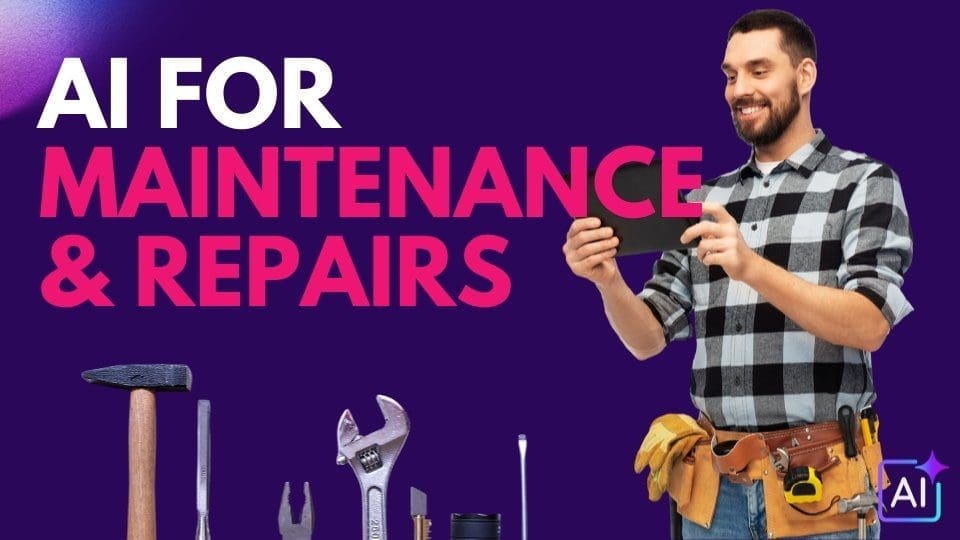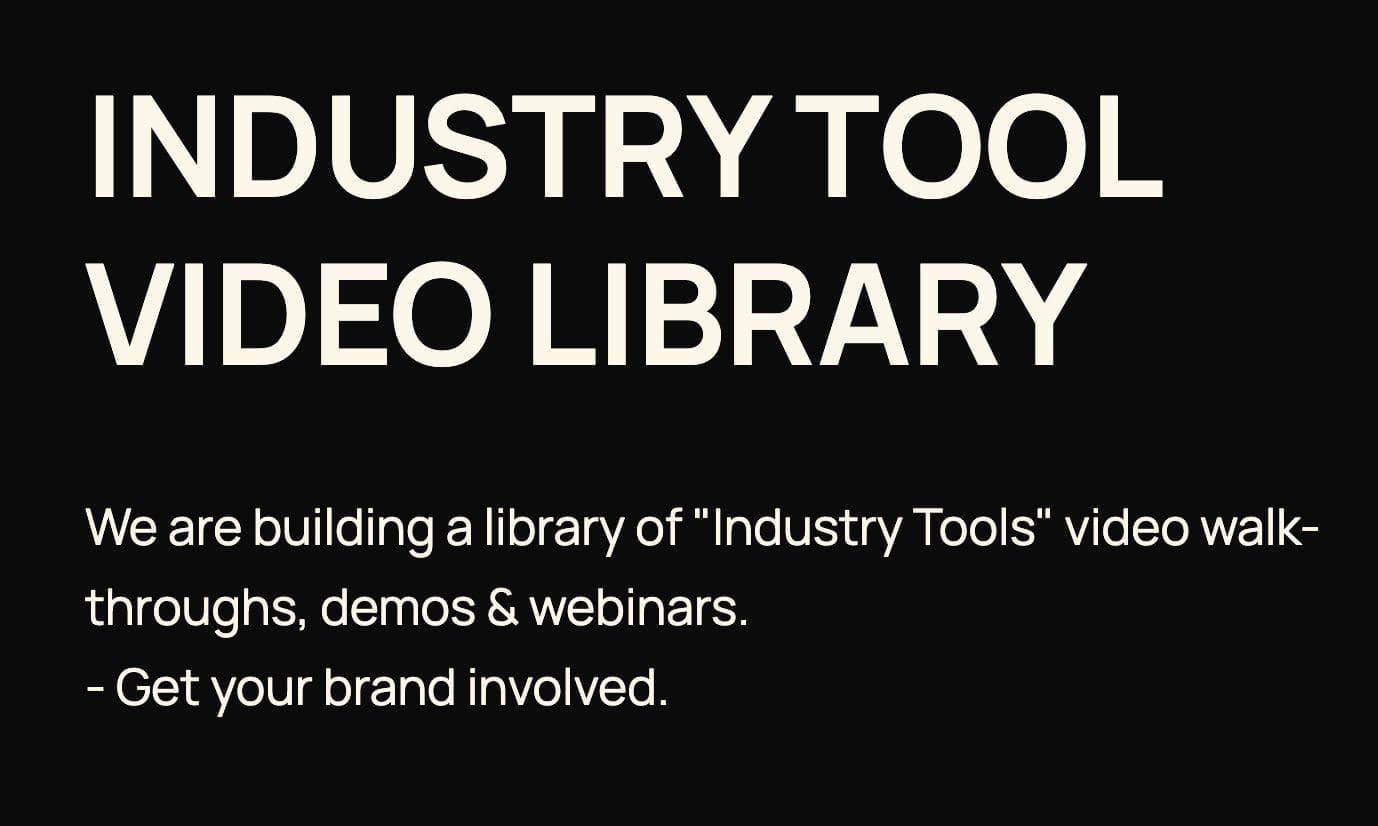AI Learning Centres:
- AI – Learn The Basics
- Get The Most From ChatGPT
- Branding in The Age of AI
- AI for Client Experience
- AI For Prospecting
- AI For Marketing
- AI For Listings & Ads
- Team Adoption of AI
- AI For PM
- AIO & Generative Search
- AI For Operations & Efficiency
- AI For Market Research & Analysis
- AI Ethics, Privacy & Compliance in Real Estate
Digital Marketing & Social Media Learning Centres:
Guides & Downloads

AI for Maintenance & Repairs
Why maintenance is the biggest time-drain for Property Managers
Hundreds of little jobs: Leaks, lights, lawns, smoke alarms – every week brings a fresh list.
After-hours dramas: A burst pipe at 9 pm can wipe out your evening.
Many moving parts: Tenants, owners, tradies, quotes, invoices, photos, compliance rules.
Paperwork overload: Each job needs logging, approval, follow-up and filing.
AI tools now read photos, sort jobs, chase quotes and even predict faults before they happen. Agencies using modern systems report maintenance workloads dropping by up to 70 %. Source
How AI tackles the pain
| Problem | What AI does | Result |
|---|---|---|
| Tenants lodge vague requests | Chatbot asks guiding questions, checks photos for clues. | Clear work order first time. |
| Urgency hard to judge | Computer vision spots water stains, sparks, mould. | Correct “urgent” flag; fewer false alarms. |
| Dispatch is slow | Rules engine matches job to best tradie by skill, price, and location. | Faster fixes, happier renters. |
| Surprise breakdowns | Sensors and predictive models warn of likely failure days ahead. | Plan repairs, cut emergency call-outs. |
| Invoice data-entry | OCR reads PDF, fills trust-account fields. | Minutes saved on every bill. |
The tech under the bonnet (in plain english)
Computer Vision – The system “looks” at a photo of a ceiling and says, “That brown ring is probably a leak.”
Natural Language Processing – A chatbot understands a tenant’s text: “The hot water’s gone cold again.”
Predictive Analytics – By studying past breakdowns and sensor readings, AI guesses when the next fault is due.
Robotic Process Automation – Software copies data from the invoice PDF straight into your trust software.
IoT Sensors – Tiny gadgets in taps or power boards send live readings to the AI every hour.
End-to-end “Smart Maintenance” workflow
Tenant lodges request
In-app wizard asks, “Can you send a photo?”
NLP tags keywords (e.g., “sparking socket”).
AI triage (seconds)
Computer vision checks the image: water stain vs cosmetic mark.
Rules engine assigns Urgent / Routine / Low priority.
Quote & dispatch
Under a set $$ limit? → Auto-approve, job sent to top-rated tradie.
Over the limit? → Owner gets one-click approval link on phone.
Tradie comms
Bot books time with tenant, sends digital key code if needed.
Calendar invites keep everyone in the loop.
Completion & proof
Tradie uploads “after” photo.
AI compares before/after; if match → auto-mark job complete.
Invoice & trust accounting
OCR reads totals, matches PO, drafts payment.
Owner statement updates in real time.
Data for next time
Every job feeds the predictive model, improving future triage.
Typical manager touch-time: under 4 minutes for a routine fix.
Real-world wins
Emergency cutbacks: Agencies using predictive leak sensors saw water-damage claims fall by one-third in 12 months. magnificentplumbing.com
Tenant happiness: Faster fixes lifted Google reviews from 3.8 ★ to 4.6 ★ in one year for a 550-door portfolio. (Vendor case study, RapidInnovation). Rapid Innovation
Cost control: AI-driven preventive plans trimmed total maintenance spend by 15 % while extending asset life. Quanta Intelligence
Implementation roadmap
Audit current flow – List steps from “tenant email” to “owner pays bill”.
Pick a pilot category – e.g., water leaks; fit smart sensors in five units.
Choose a platform – Make sure it plugs into your CRM/trust system.
Set guard-rails – Require manager sign-off for any urgent work over $500.
Train tradies – Quick video on taking clear “before” and “after” photos.
Launch & measure – Track response time, first-time-fix rate, tenant NPS.
Expand – Add electrical, HVAC, gardens once KPIs improve.
Key numbers to track
Time to first contact (target: < 30 minutes).
First-time-fix rate (% jobs solved on first visit).
Emergency vs planned ratio (aim to flip from 70/30 to 30/70).
Average maintenance cost per property.
Tenant satisfaction after each job (1-5 quick poll).
Risk radar & easy fixes
| Risk | Simple fix |
|---|---|
| Wrong urgency call | Keep “override” button for managers. |
| Tradie resistance | Offer fast payment for jobs logged through the app. |
| Data overload | Dashboards should colour-code critical vs FYI alerts. |
| Sensor false alarms | Set threshold + require two consecutive alerts. |
| Privacy concerns | Use encrypted, locally-hosted servers; delete photos after set period. |
Legal & ethical notes
Disclosure: Tenants must know photos and sensor data are stored and why.
Right to repair choice: Some states require offering three quotes above certain amounts – AI can still fetch them, but keep human approval.
Insurance clauses: Check your policy covers AI triage data as evidence when lodging claims.
The near future (2026-2030)
Self-healing buildings: Smart valves shut off water the moment a leak is sensed.
Drone roof checks: AI-guided drones scan tiles after every summer storm, no ladder needed.
Digital twin models: A full 3-D clone of the building lets AI test “what-if” scenarios before work begins.
Voice updates: Amazon Alexa-style devices in lobbies will say, “Good morning, the lift service is booked for 3 pm.”
Whole-of-life asset forecasting: AI predicts capital-works budgets ten years ahead, smoothing owner contributions.
Queensland’s first fully AI-monitored smart home already flags termite activity and cyclone-damage risks in real time.
Bottom line
AI turns maintenance from a noisy, reactive headache into a quiet, planned process:
Fewer emergencies
Lower costs
Happier tenants and owners
More hours back in your week
Keep people in control, start small, and let the data prove the pay-off.
Author – Ken Hobson.






